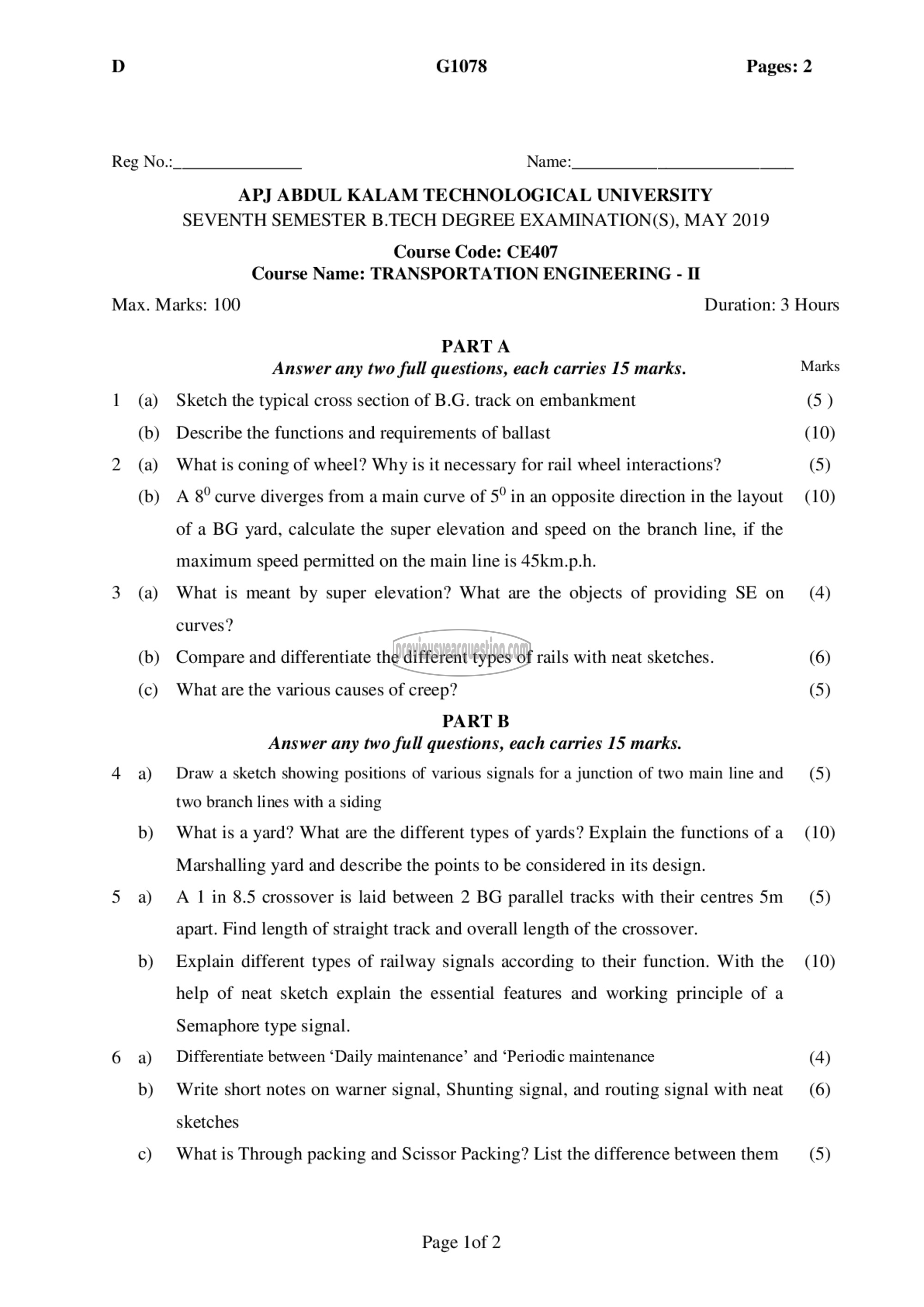APJ ABDUL KALAM TECHNOLOGICAL UNIVERSITY Previous Years Question Paper & Answer
Semester : SEMESTER 7
Subject : Transportation Engineering -II
Year : 2019
Term : MAY
Branch : CIVIL ENGINEERING
Scheme : 2015 Full Time
Course Code : CE 407
Page:1
Reg No.:_ Name:
Max. Marks: 100
(b)
(b)
(b)
(c)
b)
b)
b)
0)
(1078 Pages: 2
APJ ABDUL KALAM TECHNOLOGICAL UNIVERSITY
SEVENTH SEMESTER B.TECH DEGREE EXAMINATION(S), MAY 2019
Course Code: CE407
Course Name: TRANSPORTATION ENGINEERING - 11
PARTA
Answer any two full questions, each carries 15 marks.
Sketch the typical cross section of B.G. track on embankment
Describe the functions and requirements of ballast
What is coning of wheel? Why is it necessary for rail wheel interactions?
A 8° curve diverges from a main curve of 5° in an opposite direction in the layout
of a BG yard, calculate the super elevation and speed on the branch line, if the
maximum speed permitted on the main line is 45km.p.h.
What is meant by super elevation? What are the objects of providing SE on
curves?
Compare and differentiate the different types of rails with neat sketches.
What are the various causes of creep?
PART تا
Answer any two full questions, each carries 15 marks.
Draw a sketch showing positions of various signals for a junction of two main line and
two branch lines with a siding
What is a yard? What are the different types of yards? Explain the functions of a
Marshalling yard and describe the points to be considered in its design.
A 1 in 8.5 crossover is laid between 2 BG parallel tracks with their centres 5m
apart. Find length of straight track and overall length of the crossover.
Explain different types of railway signals according to their function. With the
help of neat sketch explain the essential features and working principle of a
Semaphore type signal.
Differentiate between ‘Daily maintenance’ and ‘Periodic maintenance
Write short notes on warner signal, Shunting signal, and routing signal with neat
sketches
What is Through packing and Scissor Packing? List the difference between them
Page lof 2
Duration: 3 Hours
Marks
(5)
(10)
(5)
(10)
(4)
(6)
(5)
(5)
(10)
(5)
(10)
(4)
(6)
(5)
